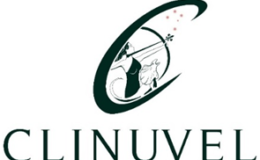

An enthusiastic Alex Williamson opened the first Synbio Markets conference last week in Berlin to familiar faces on both sides of the Atlantic. The definition of synthetic biology is often open to interpretation, with consensus settling around the tools and technologies enabling an engineering approach to the science of biology. As Williamson, CEO of conference organizers Bio Market Insights, describes it, “Synthetic biology is a cross-vertical platform.” He says the purpose of this event is to highlight synthetic biology in Europe in the context of the field globally. Judging from the range of companies represented from the USA, Canada, Europe and Japan represented, it does just that.
Several trends have emerged in synthetic biology since the field developed nearly 20 years ago. In that time, some technologies have crystallized and developed into key trends that crop up time again within synthetic biology conversations. This article summarizes some of the latest developments in those from the Synbio Markets conference.
Computer-aided biology
We covered this topic recently, but here is a quick update in this exciting area. Inscripta have developed a benchtop platform for genome engineering using CRISPR. Their CCO Jason Gammack presented the Onyx platform which can rapidly generate more than 10,000 edits per run with a single edit made per cell using the Mad7 nuclease. Different rounds of edits can be performed, meaning a cell line can accumulate up to nine edits so far.
Computational protein design is taking off in a big way and Alexandre Zanghellini’s company Arzeda is claiming an increased success rate (>75%), a decreased lead time (<6 months) and up to 10-fold less cost. Arzeda’s platform is fed into by natural designs and physics-based models which generates the DNA sequences needed to create their enzyme of choice. These are produced and tested, where machine learning is used to start the design process again based on their success.
Cell-Free Technology
Computer-aided biology is a natural advancement in synthetic biology as all living things are simply biological machines running on DNA software. But what happens if you take that machine apart and just use its components? This is cell-free technology and it’s the next big trend.
Seiji Hirasaki of Japan-based OriCiro outlined how they developed a cell free cloning method for up to 1MB of DNA. Theirs is a two-step enzymatic process that takes several hours, rather than days compared to cell-based cloning. The first step uses homologous overlapping DNA ends and can simultaneously link up to 50 fragments. The second step amplifies the DNA – all outside of the cell. The replication mechanism uses 25 essential proteins from the E. coli propagation mechanism and relies on the origin of replication OriC, which lends its name to the company. This innovative process can be used to generate gene constructs that are toxic or otherwise disliked by E. coli bacteria traditionally used for cloning. The technique is less accurate than traditional cloning, but more reliable than PCR. Hirasaki believes the process can be improved by incorporating the natural error-correcting mechanism E. coli.
Fermentation is also getting the cell-free treatment. Karim Engelmark Cassimjee of EnginZyme has developed a solid membrane to hold enzymes. The EziG carrier as it is called can be put in a fixed bed reactor in a continuous process. “The process scales very easily,” Cassimjee explains, adding “a pack bed reactor is more efficient that batch fermentation.” The data he presents is convincing. Nearly 100% conversion of product puts this process in a competitive position of traditional petrochemical synthesis, and reduced costs across the board.
Food technology
Sustainability in agriculture is a major focus of synthetic biology and cultured meat is becoming a more prominent feature of the conversation. Kate Krueger, research director at New Harvest, is developing cellular agriculture technology and alternative proteins. They are also working with others to develop scaling and a cell culture method that does not rely on fetal bovine serum (FBS), which is extremely costly. Daan Luining of Meatable is working in a similar vein. Meatable have harvested stem cells from the umbilical cord of a cow rather than taking a biopsy from the animal itself. He is one of the few people in the industry to point out the engineering potential. “Couldn’t you alter the cultured meat to make it healthier?” he asks the audience, highlighting the potential to add different components, alluding to new flavors.
Food safety is also a major concern. Nina Patrick, CEO of MiProbes, explained her company’s novel approach to tackling food safety and unnecessary food waste. They have developed a biosensor based on quorum sensing molecules – the chemical signals bacteria use to talk to each other. The cell-free biosensor is embedded on a disk, which Patrick likens it to a pregnancy test for food spoilage: if the color changes the food is not safe to eat. This test can be performed at home, empowering us as consumers to check our own food, but the technology has applications throughout the food safety chain.
Challenges facing the field
Like the key trends above, challenges in the field have also crystallized. For early-stage companies, investment is a recurring issue. Investors want to see proof of concept data and a clear route to market which tends to be obscure unless the product is in the pharma sector. Another major challenge was highlighted by Intrexon CEO RJ Kirk in his opening keynote talk: how we communicate synthetic biology. He points out that humans have reshaped the surface of the planet over 12,000 years, all without synthetic biology, noting that technological development has also created much of the world’s wealth. He views synthetic biologists as “Earth’s Tech Support” and cites communication difficulty about the science and regulatory hurdles as the major impediment to developing this technology to save the planet.















